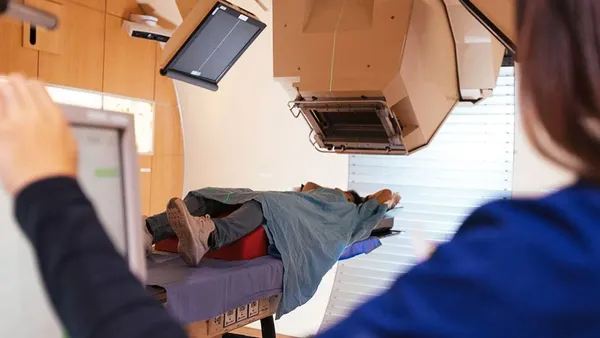Dive Brief:
- The American Medical Association has released new medical codes for 2026 amid a growing debate about whether the medical group may have too much influence over the healthcare coding system.
- The AMA deleted 84 codes, revised 46 and added 288 new ones for next year, including codes that reflect new advancements in medicine, the physician lobby announced Thursday.
- That includes advanced lab tests, which made up the largest proportions of new codes, along with codes for emerging medical services that regulators use to consider government approval.
Dive Insight:
The AMA refreshes the thousands of numerical codes in its current procedural terminology, or CPT, system each fall for the coming year. The CPT codes provide a standardized way to talk about and bill for medical services, and are deeply ingrained into U.S. healthcare — including for the government, which uses the CPT system to code for healthcare services and procedures in federal programs.
Updates for next year include new codes for digital health services like remote patient monitoring, including for a shorter period of time. Code additions will allow providers to bill for managing patients’ conditions outside of the clinic even just for a few days, the AMA said.
New codes also include medical services involving artificial intelligence, such as algorithmic analysis of electrocardiogram recording to detect heart problems or the use of software to assess the severity of burn wounds.
Despite shaky efficacy and lukewarm trust in the technology, more and more physicians are leaning on AI. According to an AMA survey, almost two-thirds of doctors reported using health AI last year, including to help them with diagnoses.
The AMA has also introduced 12 new codes to reflect new hearing device services, and updated codes for leg revascularization, a surgery that restores blood flow to the legs. The association deleted previous leg revascularization codes and added 46 new ones in their place to reflect more care being delivered increasingly in outpatient settings, along with technological advancements in the space, the AMA said.
The AMA has crafted and released CPT codes since the 1960s. But there’s rising discontent among some politicians and healthcare stakeholders with having that much power in the hands of one industry group.
For one, companies that use the codes have to pay license fees, which the AMA says go toward the costs of creating and maintaining the codes. But the association’s monopoly over the CPT system have proved gainful: “royalties and credentialing products,” a budget category that includes but isn’t limited to CPT-related products and services, brought in $326 million for the AMA in 2024. That’s more than half of the AMA’s total annual revenue.
In addition, the CMS uses CPT codes and recommendations from a powerful panel of AMA doctors to decide how much Medicare will pay for medical services. That creates a potential conflict of interest, in which a physician lobby wields outsized influence in how much physicians get paid, critics say.
The government doesn’t have to accept the committee’s recommendations, but does between 60% and 77% of the time, according to the Government Accountability Office.
Critics also point to how the payment system rewards costlier services like surgeries over preventive and primary care, nudging physicians into more lucrative specialties and worsening the nation’s shortage of primary care doctors.
In Thursday’s release, the AMA defended its role overseeing the coding process, saying it’s “uniquely positioned” as the largest association of doctors and medical students in the country.
The AMA brings “unmatched scale, expertise, and legitimacy to the task of standardizing medical service definitions,” the press release reads, adding that the process is overseen by the AMA’s editorial board with “broad input from the health care community, government, and industry.”
Still, the Trump administration may be interested in wresting control of medical billing away from the AMA, the Washington Post reported late last year, coinciding with HHS Secretary Robert F. Kennedy Jr.’s crusade to root out corporate influence in the federal government.
Though the HHS has not taken concrete steps to kill the AMA’s influence yet, the CMS did propose a Medicare payment rule this summer that reduces reimbursement for specialty services. The rule was viewed as a small step toward limiting the AMA’s input.















